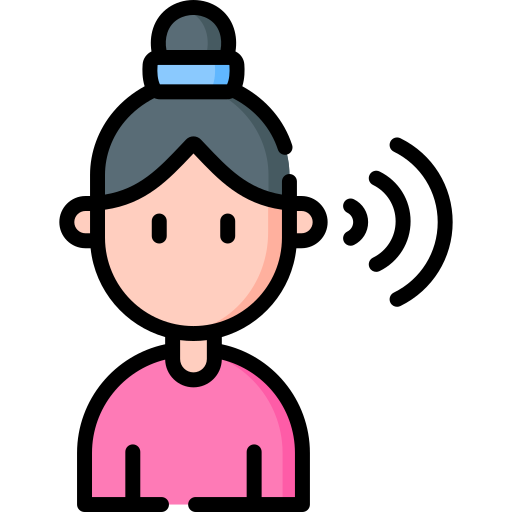Do you feel like the communication in your relationship could be better?

Reflective listening may be just what you are looking for!
What is Reflective Listening?

Reflective listening is a form of communication in which...
The listener listens for understanding, not to respond
The listener repeats back what they heard
The speaker either confirms or corrects what the listener shared
What Does Reflective Listening Look Like?
It should be back-and-forth communication between the speaker and the listener, as shown in the image below.
 To hear an audio description of the above image, click play on the audio player below:
To hear an audio description of the above image, click play on the audio player below:
What Are The Benefits?

Reflective, active listening helps to build relationships through:
Validation
the speaker feels heard
builds rapport and mutual respect between the speaker and the listener
Correcting Misunderstandings
leads to fewer arguments
allows the speaker to clarify thoughts
Bringing Feelings Into the Conversation
builds empathy and acceptance
helps to build emotional bonds
What To Do While Reflective Listening

When reflective listening, make sure to...
Keep eye contact
Pay full attention to the speaker
Avoid distractions
Limit how much you talk
Show you're listening with your body (smile, nod, say "mm-hmm")
Ask the speaker questions for clarity
Confirm that you understand the speaker's message by summarizing their points
Quiz
Johnny had a rough day at work and wanted to share his thoughts and feelings with his partner, Ann. What can Ann do while Johnny speaks to show that she is reflective listening? Select all that apply.
What Not To Do While Reflective Listening

When practicing reflective listening, avoid...
Thinking about how you want to respond
Interrupting the speaker
Disagreeing with the speaker
Acting impatiently
Jumping to conclusions about the speaker's arguments
Attempting to finish the speaker's sentences
Multi-tasking during the conversation
Let's Practice!
 Photo by Kristina Litvjak on Unsplash
Photo by Kristina Litvjak on UnsplashMeet Sam and Kelly. They're life partners who have recently been struggling to communicate with each other. Sam would love to have a conversation with Kelly about how these communication troubles are impacting their relationship.
Sam: I've been really upset. I feel like I can't talk to you about anything lately without...
Kelly: (interrupts) What are you talking about?!
Sam: What I'm trying to say is that I feel like you get angry and defensive when I try to share my feelings with you.
Kelly: (red-faced while looking off to the side) Are you KIDDING ME? You share your feelings all the time. What about MY feelings?
Sam: Forget it!
How could Kelly have responded using reflective listening?
Option A
Kelly could have...
sat and listened without responding while Sam shared
made eye contact with Sam and nodded while Sam spoke
responded with, "So what I hear you saying is...." after Sam finished speaking
Option B
Kelly could have...
avoided interrupting Sam
cried to show emotion
left when Sam said things they didn't agree with
made sure to share all of the things that Sam is doing that they don't like
Quiz
Which option should Kelly follow to practice reflective listening with Sam?
Take Action
 Photo by Helena Lopes on Unsplash
Photo by Helena Lopes on UnsplashAre you ready to build stronger communication skills and relationships with the people you care about? If so:
Your feedback matters to us.
This Byte helped me better understand the topic.
